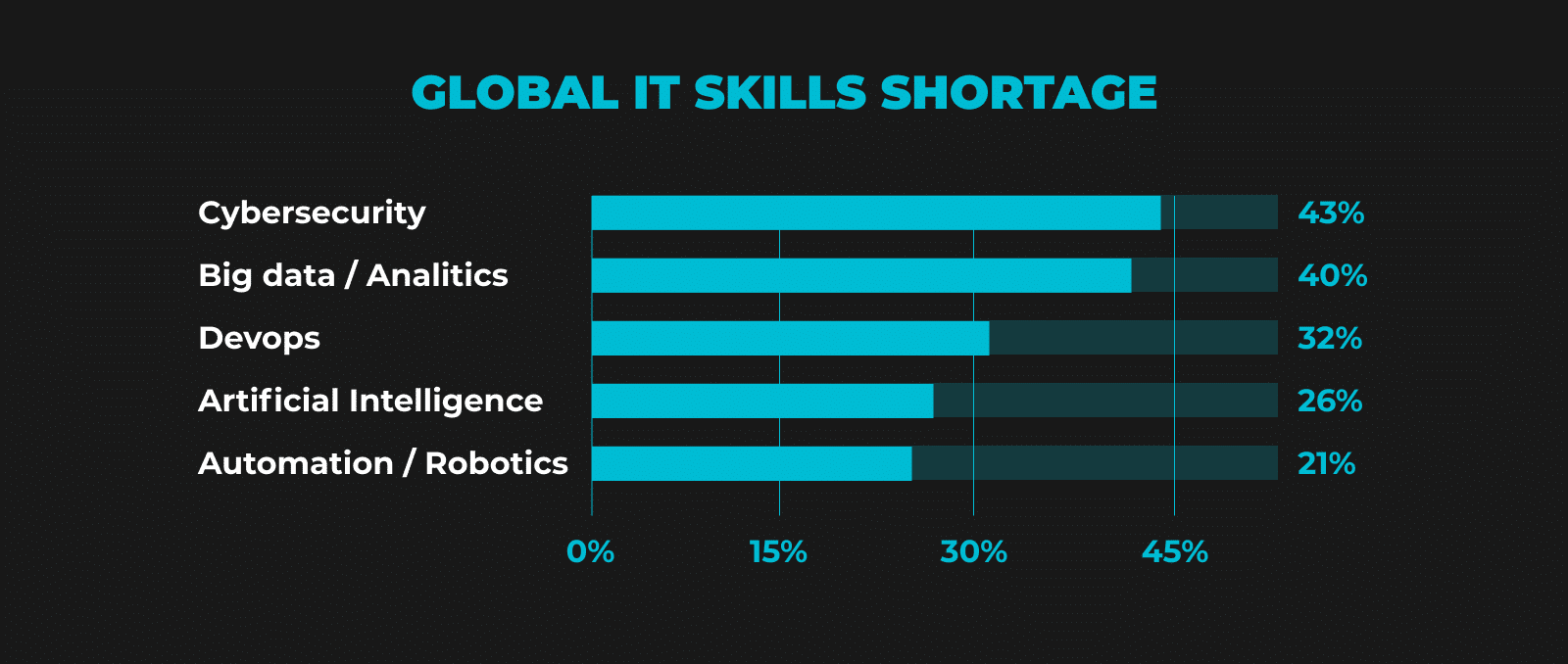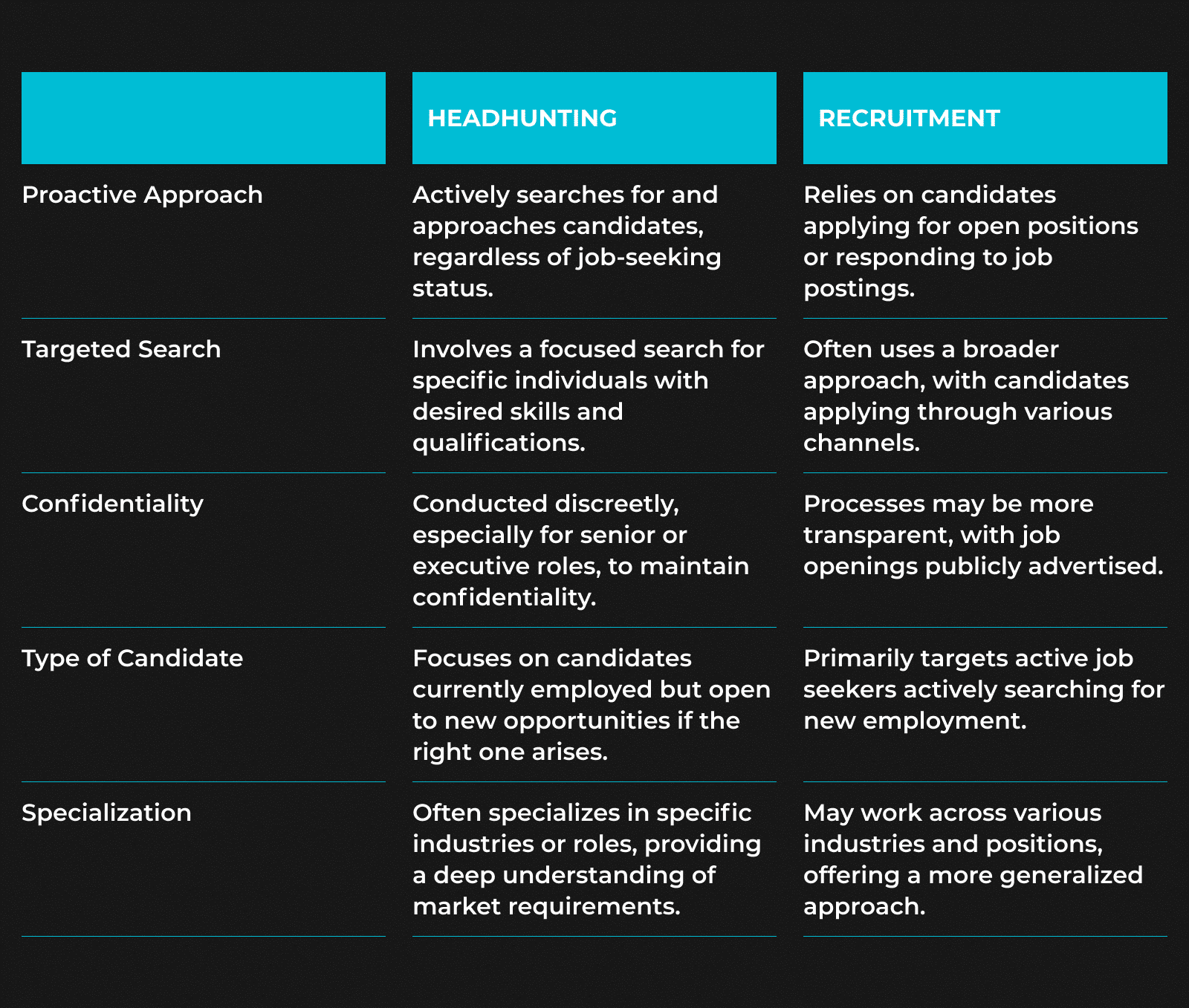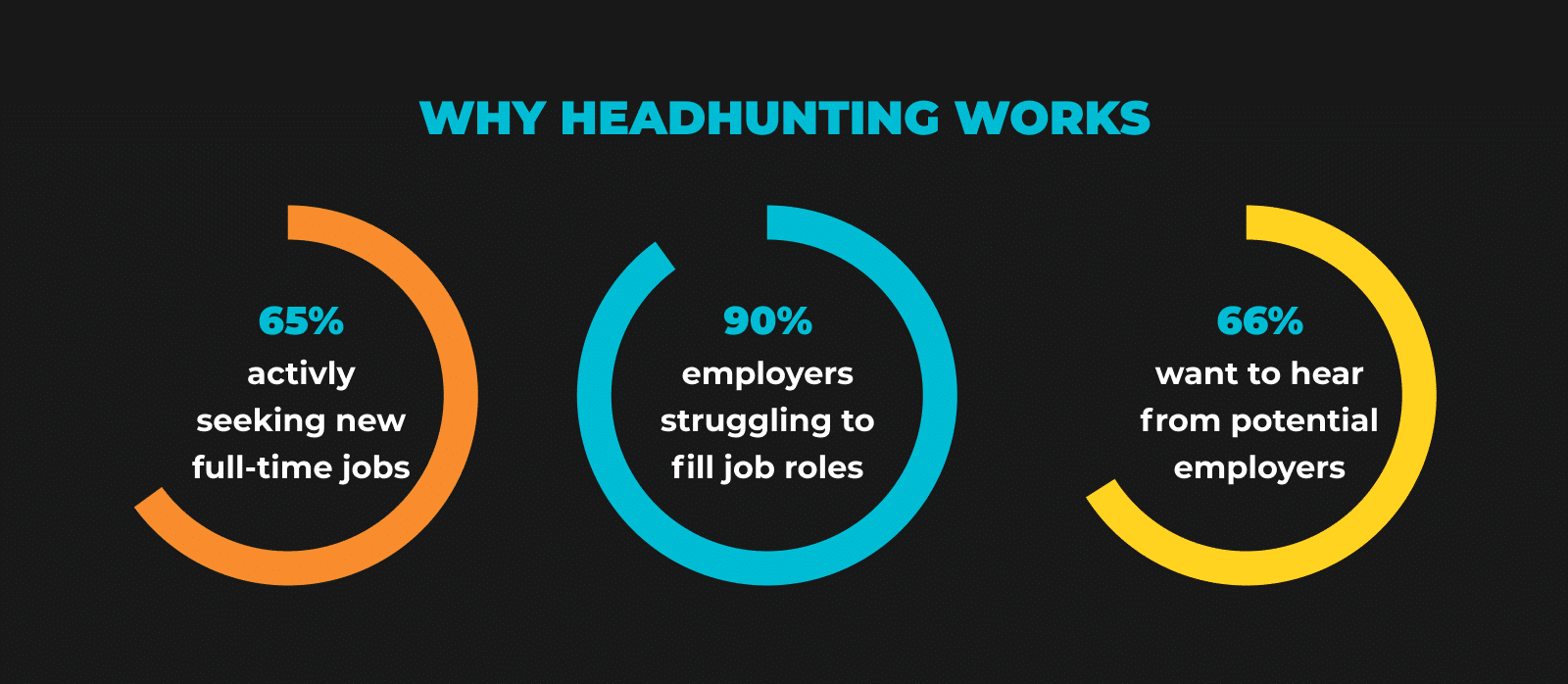Headhunting in Tech Recruitment
The field of tech recruitment is facing a significant challenge, as more than 54% of companies need more technical skills. This has led to a shift towards headhunting as a key recruitment strategy. Headhunting is rising in prominence due to the rapid introduction of new technologies, quick changes in skill requirements, and the scarcity of highly specialized professionals.

However, to effectively leverage headhunting, organizations must deeply understand how to identify, engage, and attract top talent. This article explores the various strategies that can be used and the challenges involved. We aim to provide an overview of its impact on tech recruitment.
Read on to learn more.
What is Headhunting?
Headhunting in recruitment is a process where recruiters or headhunters proactively seek out and approach individuals. They target those with specific skills and experience for a job role rather than relying on receiving applications through traditional job postings. This approach is common in industries like technology, where certain skills and expertise are in high demand but need more supply.

In 2022, the global headhunting or executive search market was valued at $17,618.7 million. It is projected to expand at a rate of 6.94%, reaching $26,349.96 million by 2032. This growth highlights the increasing significance of executive search in talent acquisition.
Headhunting vs. Traditional Recruitment
While they may appear similar, headhunting and traditional recruitment differ in crucial ways. The table below shows some of the differences between the two approaches.

How Does Headhunting Work In Tech?
The headhunting process involves a headhunter, a professional IT recruiter with fundamental knowledge of IT and the major technologies used in the industry. They also understand the roles of IT professionals, and they work closely with managers to understand the company’s culture, values, and goals. This knowledge helps them match the right candidates with the right companies.
Here’s how a typical IT headhunting process works:
Get a Job Description
The process starts with a job description from the client regarding their requirements. This includes essential criteria and factors like programming skills, tech stack familiarity, experience level, and soft skills. This information serves as a guide, ensuring that the search aligns precisely with the client’s needs and facilitates clear communication with prospective candidates.
Identifying Possible Candidates
Headhunters leverage their existing network, including past clients and industry friends, to find potential candidates. This network-based approach uncovers hidden talent not found through regular recruitment methods. Other methods headhunters employ include joining conferences, hackathons, and other industry events to connect with candidates.
Additionally, they use social media, job boards, and industry events to find candidates. Platforms like LinkedIn, Twitter, and Facebook help them engage with professionals and understand their skills.
Face-to-Face Meetings
After identifying potential candidates, headhunters discreetly contact them. The next step is face-to-face meetings to assess fit for the role and company culture. These meetings reveal personal motivations and address candidate concerns.
Negotiation and Placement
Once a suitable candidate is found and approved by the employer, negotiations begin on compensation and benefits. The headhunter facilitates the hiring process, ensuring all necessary documentation is completed for a smooth transition.
Transition Support
Transition support is crucial. The headhunting recruitment agency guides candidates during onboarding, assists with paperwork introductions to the team, and may provide resources for professional development. This ensures a positive start at the new company.
Headhunting in the tech industry is exceptionally vital due to the swift evolution of technology and the surging demand for specialized skills. As conventional recruitment methods are no longer insufficient, companies increasingly turn to this proactive approach to discover top talent and propel innovation.
Ensure your team has the expertise to thrive in the dynamic tech landscape.
Pros and Cons of Headhunting
If you have a new position in your company, you might wonder whether to use a headhunter or stick with the traditional recruitment approach. These pros and cons can help you make up your mind.

Pros of Headhunting in Tech Recruitment
Access to a Wider Tech Talent Pool
Headhunters tap into extensive networks, expanding the talent pool beyond the reach of traditional recruitment methods. This widens the possibilities for finding the right candidate, even with the scarcity of talent in the IT industry.
Attract Passive Tech Talent
Headhunters excel at recruiting tech talents in competitive domains. Their ability to identify and engage with professionals not actively job-seeking is crucial for acquiring individuals with cutting-edge skills.
Shorter Tech Hiring Cycles
Headhunters streamline the recruitment process, leveraging their expertise to quickly identify, approach, and assess potential candidates. This agility results in shorter hiring cycles, which is crucial in the fast-paced tech industry.
Cost-Effective Tech Recruitment
Contrary to common belief, using headhunters can be cost-effective. Their targeted approach minimizes the risk of hiring mistakes, saving costs associated with prolonged vacancies and subsequent training for replacement hires.
Improved Chance of Finding the Best Tech Talent
Tech-specialized headhunters possess a deep understanding of the industry’s specific requirements. This expertise significantly increases the likelihood of identifying and securing the best-fit candidate for a specific role.
Confidential Tech Recruitment
In the tech and IT sector, confidentiality is often paramount. Headhunters provide a discreet avenue for hiring, crucial for sensitive roles or when organizations need to keep tech-related hiring initiatives under wraps, ensuring a seamless and confidential transition.
Cons of Headhunting in Tech Recruitment
Limited Employer Involvement
Headhunters can distance employers from the direct recruiting process, potentially leading to a lack of alignment between the company’s values and the candidate’s fit.
Costly In-demand Tech Talent
In the competitive tech industry, highly sought-after professionals may demand premium compensation, increasing costs for companies seeking to attract and secure top-tier tech talent.
Potentially High Commissions
Typically, external headhunters, especially those specialized in top-tier talent, charge substantial fees or commission rates. This can significantly strain the recruitment budget of tech companies, particularly startups with limited financial resources, where every expense is critical.
Low-vested Interest
While headhunters are experts in talent acquisition, they may need to invest more in the company’s long-term success as internal hiring teams. This potential lack of deep understanding might affect the quality of the candidate-company match.
Is Headhunting Ethical?
Headhunting, while debated, is generally considered ethical when conducted responsibly. It’s seen as essential in sectors like technology, where finding specialized talent is crucial. However, concerns arise around issues like talent poaching, potentially leading to contract breaches or an overly competitive job market.
The ethical standing of headhunting largely depends on the headhunter’s approach, industry standards, and the views of those involved. When headhunters act with transparency, consent, and respect for confidentiality, avoiding practices that encourage unethical behavior like contract violation, headhunting IT talents becomes valuable for aligning skilled professionals with suitable career opportunities, ultimately benefiting both the employee and the employer.
Choosing a reliable remote job agency is key to maximizing the benefits of headhunting and avoiding ethical concerns. Whether you’re seeking a penetration tester in Ukraine or a skilled software engineer in Romania, a trustworthy partner is crucial in addressing the skills gap within your organization.
Does Headhunting Work
The days of relying solely on job ads are long gone.
‘The global talent shortage has hit a 17-year high, with 78% of employers worldwide facing difficulties finding the IT skills they need.’ Manpower Group
Faced with intense competition and a scarcity of top talent, companies use unconventional yet highly effective headhunting to secure the best candidates. And does it work? Absolutely.
According to our headhunter definition, this technique zeroes in on individuals already excelling in their current roles. While this may seem counterintuitive, it’s precisely why headhunting has earned its reputation for uncovering top talent.
Top-tier developers, engineers, and tech experts are typically already engaged in their current roles. While they may not actively look for fresh opportunities, they could be open to change if the right offer comes. Some might even search for a more challenging role and need help finding where to discover it. According to one study, 65% of American workers actively explore new job possibilities while still employed. In fact, many people start thinking of a move after just four years in an organization. This is where the art of headhunting comes into play.

Headhunters don’t just identify potential candidates; they approach them strategically and enticingly. Crafting a compelling pitch, they highlight a new role’s unique benefits and opportunities, requiring a deep understanding of the candidate’s current position, motivations, and aspirations. A successful headhunter knows how to capture the candidate’s interest, make them envision a brighter future, and ultimately persuade them to take the leap.
One of the reasons headhunting has gained traction is the exclusivity it offers. Being approached by a tech headhunter shows that a candidate is exceptional and highly sought after. This recognition boosts their self-esteem and sparks curiosity about exploring opportunities beyond their comfort zone. It’s this exclusive factor that makes headhunting an attractive proposition for both candidates and companies alike.
In a world where competition for skilled individuals is fierce, using headhunters for recruitment and talent acquisition is a refreshing and highly effective alternative to traditional recruitment methods, and it works very well.
At Newxel, we provide customized recruitment services crafted to link you with top talents in the tech industry. Allow us to assist you in navigating talent acquisition challenges and constructing a high-performing team that propels your organization toward success. Contact us.
Conclusion
Headhunting is vital in modern recruitment, helping organizations navigate the swiftly changing and competitive tech landscape.
As information technology leaders grapple with the evolving skill sets required for their teams, the significance of headhunters becomes clear in their ability to identify and secure top-tier talent. Bridging the critical skills gap, these professionals emerge as key contributors to the success of modern businesses.
If you’re ready to elevate your tech team, consider partnering with Newxel. Discover how we can connect you with skilled IT professionals with technical expertise and seamlessly integrate with your company culture. Please take the next step towards building a high-performing, innovative team by exploring the tailored solutions we offer at Newxel.





